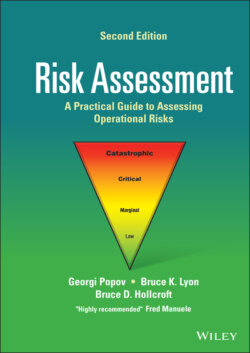Читать книгу Risk Assessment - Georgi Popov - Страница 37
2.4.3 Other OSHA Standards
ОглавлениеOther OSHA standards require that a hazard or exposure determination be made, and that existing hazards are controlled. Examples include the 1910.146, Permit‐required Confined Space standard which requires an initial evaluation of the workplace to identify confined spaces and determine if they are “permit‐required” spaces, the identification and evaluation of hazards prior to entry into Permit spaces; and the 1910.1200, Hazard Communication standard which requires an inventory of hazardous chemicals and a hazard determination be made. Thus, risk assessments, while not specifically required, are a technique that should be used to comply with these requirements.
Also consider the OSHA General Duty Clause requirement that all employers must provide their employees a workplace that is free of recognized hazards. The General Duty Clause is intended to apply to all hazards that the employer should be aware of, but that are not covered by a specific OSHA regulation. A logical approach to this requirement is to perform hazard identification and analysis, and risk assessment. Again, risk assessment is not specifically required by the General Duty Clause, but a thorough risk assessment would enable employers to comply with this OSHA requirement.
It is the authors’ opinion, that the United States has fallen behind other parts of the world in the use of formal risk assessments, partially due to the fact that most OSHA standards do not include specific requirements to do so. However, there is a growing interest in the use of risk assessment taking shape in consensus standards, and industry practices.
